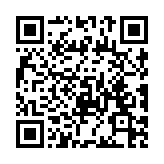Blockquote render hooks
Context
Blockquote render hook templates receive the following context:
- AlertType
- (
string) Applicable whenTypeisalert, this is the alert type converted to lowercase. See the alerts section below. - AlertTitle
- New in v0.134.0
- (
template.HTML) Applicable whenTypeisalert, this is the alert title. See the alerts section below. - AlertSign
- New in v0.134.0
- (
string) Applicable whenTypeisalert, this is the alert sign. Typically used to indicate whether an alert is graphically foldable, this is one of+,-, or an empty string. See the alerts section below. - Attributes
- (
map) The Markdown attributes, available if you configure your site as follows:markup: goldmark: parser: attribute: block: true[markup] [markup.goldmark] [markup.goldmark.parser] [markup.goldmark.parser.attribute] block = true{ "markup": { "goldmark": { "parser": { "attribute": { "block": true } } } } } - Ordinal
- (
int) The zero-based ordinal of the blockquote on the page. - Page
- (
page) A reference to the current page. - PageInner
- (
page) A reference to a page nested via theRenderShortcodesmethod. See details. - Position
- (
string) The position of the blockquote within the page content. - Text
- (
template.HTML) The blockquote text, excluding the first line ifTypeisalert. See the alerts section below. - Type
- (
string) The blockquote type. Returnsalertif the blockquote has an alert designator, elseregular. See the alerts section below.
Examples
In its default configuration, Hugo renders Markdown blockquotes according to the CommonMark specification. To create a render hook that does the same thing:
<blockquote>
{{ .Text }}
</blockquote>To render a blockquote as an HTML figure element with an optional citation and caption:
<figure>
<blockquote {{ with .Attributes.cite }}cite="{{ . }}"{{ end }}>
{{ .Text }}
</blockquote>
{{ with .Attributes.caption }}
<figcaption class="blockquote-caption">
{{ . | safeHTML }}
</figcaption>
{{ end }}
</figure>Then in your markdown:
> Some text
{cite="https://gohugo.io" caption="Some caption"}Alerts
Also known as callouts or admonitions, alerts are blockquotes used to emphasize critical information.
Basic syntax
With the basic Markdown syntax, the first line of each alert is an alert designator consisting of an exclamation point followed by the alert type, wrapped within brackets. For example:
> [!NOTE]
> Useful information that users should know, even when skimming content.
> [!TIP]
> Helpful advice for doing things better or more easily.
> [!IMPORTANT]
> Key information users need to know to achieve their goal.
> [!WARNING]
> Urgent info that needs immediate user attention to avoid problems.
> [!CAUTION]
> Advises about risks or negative outcomes of certain actions.The basic syntax is compatible with GitHub, Obsidian, and Typora.
Extended syntax
With the extended Markdown syntax, you may optionally include an alert sign and/or an alert title. The alert sign is one of + or -, typically used to indicate whether an alert is graphically foldable. For example:
> [!WARNING]+ Radiation hazard
> Do not approach or handle without protective gear.The extended syntax is compatible with Obsidian.
The extended syntax is not compatible with GitHub or Typora. If you include an alert sign or an alert title, these applications render the Markdown as a blockquote.
Example
This blockquote render hook renders a multilingual alert if an alert designator is present, otherwise it renders a blockquote according to the CommonMark specification.
{{ $emojis := dict
"caution" ":exclamation:"
"important" ":information_source:"
"note" ":information_source:"
"tip" ":bulb:"
"warning" ":information_source:"
}}
{{ if eq .Type "alert" }}
<blockquote class="alert alert-{{ .AlertType }}">
<p class="alert-heading">
{{ transform.Emojify (index $emojis .AlertType) }}
{{ with .AlertTitle }}
{{ . }}
{{ else }}
{{ or (i18n .AlertType) (title .AlertType) }}
{{ end }}
</p>
{{ .Text }}
</blockquote>
{{ else }}
<blockquote>
{{ .Text }}
</blockquote>
{{ end }}To override the label, create these entries in your i18n files:
caution: Caution
important: Important
note: Note
tip: Tip
warning: Warning
caution = 'Caution'
important = 'Important'
note = 'Note'
tip = 'Tip'
warning = 'Warning'
{
"caution": "Caution",
"important": "Important",
"note": "Note",
"tip": "Tip",
"warning": "Warning"
}
Although you can use one template with conditional logic as shown above, you can also create separate templates for each Type of blockquote:
layouts/
└── _markup/
├── render-blockquote-alert.html
└── render-blockquote-regular.htmlPageInner details
New in v0.125.0The primary use case for PageInner is to resolve links and page resources relative to an included Page. For example, create an “include” shortcode to compose a page from multiple content files, while preserving a global context for footnotes and the table of contents:
{{ with .Get 0 }}
{{ with $.Page.GetPage . }}
{{- .RenderShortcodes }}
{{ else }}
{{ errorf "The %q shortcode was unable to find %q. See %s" $.Name . $.Position }}
{{ end }}
{{ else }}
{{ errorf "The %q shortcode requires a positional parameter indicating the logical path of the file to include. See %s" .Name .Position }}
{{ end }}Then call the shortcode in your Markdown:
{{% include "/posts/post-2" %}}Any render hook triggered while rendering /posts/post-2 will get:
/posts/post-1when callingPage/posts/post-2when callingPageInner
PageInner falls back to the value of Page if not relevant, and always returns a value.
The PageInner method is only relevant for shortcodes that invoke the RenderShortcodes method, and you must call the shortcode using Markdown notation.
As a practical example, Hugo’s embedded link and image render hooks use the PageInner method to resolve markdown link and image destinations. See the source code for each:
